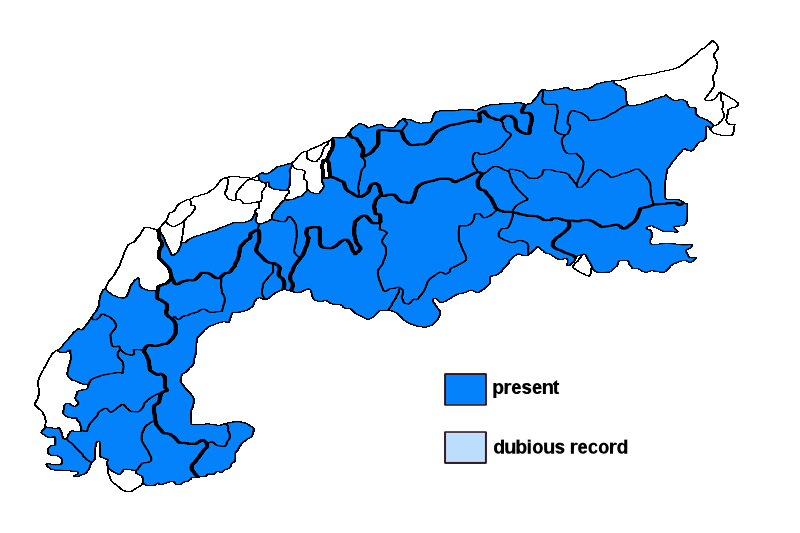Caloplaca hungarica H. Magn.
Syn.: Blastenia hungarica (H. Magn.) Arup, Søchting & Frödén, Caloplaca depauperata H. Magn. non (Müll. Arg.) Zahlbr., ?Caloplaca ferruginea (Huds.) Th. Fr. f. corticola Anzi, Caloplaca ferruginea (Huds.) Th. Fr. var. hungarica (H. Magn.) Clauzade & Cl. Roux, Caloplaca subathallina H. Magn.
Lichenised. Poorly known taxon.
Substrate: bark, lignum
Altitudinal range: from the montane belt (potential vegetation: deciduous forests dominated by Fagus sylvatica and closed coniferous forests with Picea abies) to the subalpine belt (potential vegetation: open, taiga-like forests dominated by Larix decidua and/or Pinus cembra and Rhododendron)
Note: a temperate to boreal-montane lichen found on twigs of acid-barked trees, incl. oaks and Larix, perhaps overlooked, or confused with C. ferruginea in the past, but not common everywhere in the Alps, perhaps because of its subcontinental character. According to Vondrák (see Nimis 2016) the species, as currently understood, is not homogeneous: morphologically identical populations growing in Mediterranean habitats at low altitudes belong to ""Blastenia xerothermica ined."", which has a strictly Mediterranean distribution and is quite common in Italy and SE France. Some samples from lowland areas in the Southern Alps might belong to this still undescribed taxon, which is listed below.

Austria: Vorarlberg; Tirol; Salzburg; Kärnten; Steiermark; Oberösterreich; Germany: Oberbayern; Schwaben; Switzerland: Graubünden; Schwyz; Ticino; Valais; France: Alpes-de-Haute-Provence; Haute-Alpes; Alpes-Maritimes; Isère; Savoie; Vaucluse; Italy: Friuli; Veneto; Trentino Alto Adige; Lombardia; Piemonte; Valle d'Aosta; Liguria; Slovenia: Alpine and Pre-Alpine Slovenia;





